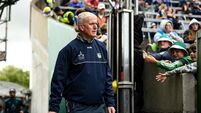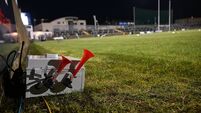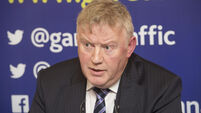Tim Gabbett: When it comes to player welfare, communication remains the key

The vision was to create an environment where the lifespan of human development could be taught, learned, and researched through courses and academic programmes that spoke to future practitioners in early years education, Montessori, and sport science.
Such aspirations require an awareness of change and progression in each domain in order to stay up-to-date with current research and methods of delivery. Sport science is regarded as one of the fastest changing domains in education, with technology impacting on the day-to-day work of applied practitioners.
The industry is not standing still, so education within the industry must also keep moving. A common theme nowadays to keep pace with best practice is to provide continuing professional development events for those practitioners and students alike that are keen to stay up with the curve of change that shapes their industry.
Such CPD events live and die by the quality of the speaker that is brought to impart their knowledge and expertise on the audience and Australian Dr Tim Gabbett was the first guest to take part in what is to become a regular sport science CPD programme through the department at CIT.
Tim is recognised as a world leader in sport science and in particular, athlete monitoring. In other words, he is an expert in getting athletes fit and keeping them fit and healthy through the rigours of an athletic season. In conjunction with athlete monitoring company, Metrifit, the event became a reality because of research in the domain of athlete monitoring being conducted in CIT by postgraduate student and Kildare GAA sport scientist Jason McGahan, along with Cian O’Neill and Dr Con Burns.
The purpose of any such research is about learning how to become better practitioners for the athletes that are our responsibility from one week to the next, game to game, season to season.
I was immediately struck by Tim’s overwhelming sense of duty to the athlete. His impressive CV boasts contracts with sporting organisations across five continents as diverse as volleyball, handball, rugby, league and union, and soccer. In fact, in the fortnight before he made CIT his office he had spent time with Chelsea, Barcelona, and Super Rugby’s Sharks in Durban.
The all-important take home messages for those in attendance at Cork IT? Top of that list for me was the message that player welfare is shared between all personnel who work with athletes. The communication between the triumvirate of coach, S&C and medic regarding the physical condition and match readiness of an athlete is a collective responsibility. In fact, there was a recurring theme of the importance of good old-fashioned communication.
Not doubting the positive influence a top-of-the-range athlete monitoring system could make to the efficient running of your team, Tim constantly brought the captive audience back to the brass tacks of asking the simple ‘how do you feel’ questions of your athlete to help you to make ever more informed training decisions.
Such decisions are what separate top-end practitioners from the chasing pack. In an age of increasing demands on athletes, especially in contact sport, Tim recognises that players are going to break down and the expectation of having a 100% injury-free team is not realistic, unless as he said, you stop all training and playing!
To his credit and his passion for what he does, he has developed an incredibly reliable system to help flag potential injury flare-ups. His system and evidence-based research helps coaches identify the fragile athletes from their more robust team-mates and to assist the safe passage of the youth athlete through to the senior ranks as he has shown that age is an independent risk factor for injury.
He also spoke of the importance of training hard in order to protect players from injury. Taking care to mention that this must be done systematically and not with rapid changes in load as fatigue comes and goes fairly quickly, but fitness takes time to build.
Like all great messages, interpretation is key. Tim spoke of how athletes should be encouraged to engage in some maintenance work in their off-season to reduce the time to return to full fitness once pre-season commences. That makes perfect sense for sports where there is clearly defined seasons that fit within a 12-month cycle such as rugby union, basketball, and soccer.
But if you’re working in Gaelic games where 15-month seasons continue to overlap and overload star players at club and county level, then it is imperative that you interpret the wisdom of Tim Gabbett appropriately.
The value of having experts like Gabbett coming to our shores to deliver CPD sessions, is the hope and expectation that his message goes beyond the four walls of the auditorium, and effectively, meaningfully and appropriately reaches those responsible for the welfare of our athletes. In fact, Tim Gabbett empowers his listeners to spread the word of athlete welfare loud and clear, not only because it’s common sense, or because he says so, but because his evidence is undeniably convincing.














